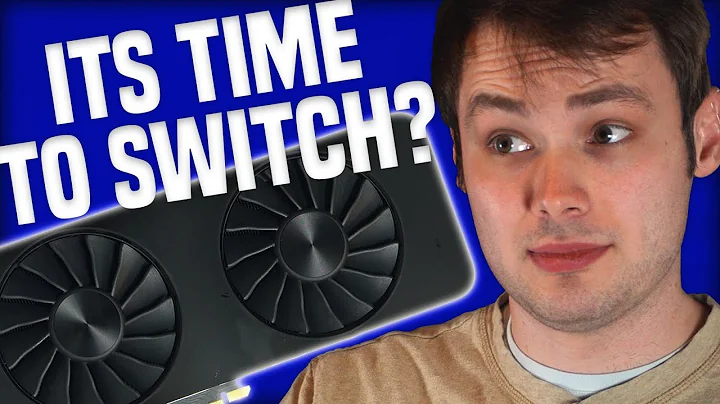Unleash Your Creativity with the Nexus A7: The Ultimate Board for FPGA Beginners!
Table of Contents
- Introduction
- The Nexus A7: An Overview
- Who is the Nexus A7 for?
- The Learning Curve: Ideal for First-Time Users
- Exploring the Peripherals on the Nexus A7
- The Progression Route to Using the Nexus A7
- The Commercial Benefit of Creating the Nexus A7
- Digilent and National Instruments Partnership
- Alternatives to the Nexus A7 for Learning Digital Electronics
- Why the Nexus A7 is an Ideal Starting Point
- Conclusion
Introduction
In this article, we will be exploring the Nexus A7, a training board for academic students learning about digital design. The Nexus A7 is a versatile piece of hardware that allows users to implement various digital logic hardware and design their own components. Whether you are a student new to FPGAs or a professional design engineer, the Nexus A7 offers a unique learning experience. Let's dive in and discover what makes the Nexus A7 an ideal tool for learning and experimentation.
The Nexus A7: An Overview
The Nexus A7 is a trainer board designed for students studying digital design. At its core, the Nexus A7 features an FPGA (Field-Programmable Gate Array), a flexible integrated circuit that allows users to implement their digital logic designs. The board comes equipped with a range of peripherals, including interfaces like SPI, I2C, and UART, DDR memory for complex projects, and VGA for monitor display capabilities. This combination of flexibility and peripherals makes the Nexus A7 a powerful tool for learning and experimentation in the field of digital design.
Who is the Nexus A7 for?
The Nexus A7 is primarily targeted at students and individuals who are new to FPGAs. It serves as an ideal starting point for those who have little or no experience working with FPGAs before. The board's user-friendly design and extensive peripheral support provide beginners with a better learning curve compared to other FPGA products. Additionally, the Nexus A7 is also suitable for professional design engineers looking to understand how FPGAs interact with their systems.
The Learning Curve: Ideal for First-Time Users
One of the key advantages of the Nexus A7 is its user-friendly design, specifically tailored for first-time users. The board offers a wide range of peripherals that are essential for learning digital design concepts. Students can start with simple projects, such as building their own LED controller, and gradually progress to more complex designs by exploring the various interfaces and components available on the board. The Nexus A7 provides a hands-on experience that enables users to understand the practical implementation of digital design concepts.
Exploring the Peripherals on the Nexus A7
The Nexus A7 is equipped with a diverse set of peripherals that expand the board's capabilities. Along with the fundamental SPI, I2C, and UART interfaces, the board features DDR memory, which is useful for handling more advanced and memory-intensive projects. The VGA interface allows users to display their designs on a monitor, opening up possibilities for visual feedback. These peripherals provide users with the tools to experiment and implement various digital logic designs, fostering creativity and innovation.
The Progression Route to Using the Nexus A7
To make the most of the Nexus A7, it is essential to have a foundation in computer engineering and coding. Students typically start by learning programming languages like Python and C and gaining experience with microcontrollers. As they delve further into the field, they begin to work with assembly language and eventually reach the point of designing circuits that implement processors. It is at this stage that the Nexus A7 becomes a valuable tool, allowing students to practically implement processors and gain hands-on experience in a controlled environment.
The Commercial Benefit of Creating the Nexus A7
While the Nexus A7 is designed with students in mind, there are commercial benefits for the creators as well. Although labs may purchase these boards, there is a recurring stream of new students each year. Additionally, Digilent understands the financial constraints students may face, as it was founded by professors who are aware of the costs associated with purchasing educational tools. The Nexus A7 serves as a bridge between academia and industry, as it familiarizes students with the tools and technology they will encounter in their future careers.
Digilent and National Instruments Partnership
Digilent is a member of the National Instruments family, and this partnership plays a significant role in introducing students to digital electronics. By working together, Digilent and National Instruments provide students with the tools and resources to understand the digital environment and how it can be measured and analyzed. The Nexus A7, in conjunction with other test and measurement products offered by Digilent, creates a holistic approach to learning and working in the field of digital design.
Alternatives to the Nexus A7 for Learning Digital Electronics
If the Nexus A7 were not available, aspiring digital electronics enthusiasts and students could still explore the world of FPGAs through alternative means. Xilinx, the company behind the Nexus A7, offers simulators within their toolchain that allow users to design and simulate FPGA designs without physical hardware. While this approach provides a logical analyzer view and aids in learning digital design, it lacks the practical experience of physically connecting components and witnessing tangible results. Additionally, there are video games that offer active simulators for learning FPGA designs, providing an interactive and engaging learning environment.
Why the Nexus A7 is an Ideal Starting Point
The Nexus A7 serves as an ideal starter pack for students and professionals alike who wish to delve into the world of FPGAs. Its combination of flexibility, extensive peripheral support, and a user-friendly design makes it the perfect choice for beginners. By working with the Nexus A7, users can gain a deeper understanding of FPGA technology, learn how to control various digital hardware, and develop their own components and applications. Investing in the Nexus A7 is not just an investment in a board; it is an investment in acquiring knowledge and practical skills.
Conclusion
The Nexus A7 is a powerful tool for students and professionals looking to explore the world of digital design and FPGAs. With its versatile hardware and extensive peripheral support, the Nexus A7 offers a unique learning experience. From simple LED control to designing complex processors, the Nexus A7 allows users to unleash their creativity and innovate in the realm of digital electronics. Whether you are a beginner or an expert, the Nexus A7 is the gateway to unlocking new possibilities in the world of FPGA design.
Highlights:
- The Nexus A7 is a versatile training board for academic students learning about digital design.
- It is designed to have a better learning curve for first-time FPGA users.
- The board comes equipped with a range of peripherals such as SPI, I2C, UART, DDR memory, and VGA.
- The Nexus A7 bridges the gap between academia and industry, familiarizing students with industry-standard tools.
- Digilent's partnership with National Instruments enhances the learning experience in digital electronics.
- Alternative options for learning digital design include simulators within the Xilinx toolchain and video games with active simulators.
- The Nexus A7 is an ideal starting point for students and professionals alike, offering practical experience and flexibility.
Frequently Asked Questions (FAQ)
Q: Who is the Nexus A7 designed for?
A: The Nexus A7 is primarily designed for academic students learning about digital design, but it is also suitable for professionals looking to understand how FPGAs interact with their systems.
Q: What makes the Nexus A7 user-friendly for beginners?
A: The Nexus A7 offers a better learning curve compared to other FPGA products. Its extensive peripheral support and versatile design provide beginners with a practical and hands-on learning experience.
Q: Are there any plans for future upgrades or variations of the Nexus A7?
A: While there are no specific plans at the moment, future upgrades or variations of the Nexus A7 cannot be ruled out. The possibility of enhancing the board's capabilities to better serve the learning needs of users remains open.
Q: What are the alternatives to the Nexus A7 for learning digital electronics?
A: Xilinx provides simulators within their toolchain that allow users to design and simulate FPGA designs without physical hardware. Additionally, there are video games available that offer active simulators for learning FPGA designs.
Q: How does the Nexus A7 benefit students financially?
A: Digilent understands the financial constraints faced by students and offers the Nexus A7 at a price point similar to a textbook. The company aims to make educational tools accessible and affordable for students.
Q: Can professionals benefit from using the Nexus A7?
A: Yes, professionals working in environments where FPGAs are utilized can benefit from the Nexus A7. The board offers extensive peripheral support and a practical learning experience, enabling professionals to better understand the interaction between FPGAs and their systems.
Q: What is the significance of Digilent's partnership with National Instruments?
A: Digilent's partnership with National Instruments allows students to gain exposure to the tools and technology used in the industry. It provides a seamless transition from academia to working environments, where National Instruments products are commonly used.
Q: What is the cost of the Nexus A7?
A: The Nexus A7 is priced around $400, which is comparable to the cost of a textbook. There is also a lower-cost offering, the Basis 3, which provides similar features with some advanced functionalities removed.
Q: Can the Nexus A7 be used for both simple and complex projects?
A: Yes, the Nexus A7 is designed to handle a wide range of projects. From simple projects such as LED control to more complex designs involving DDR memory and VGA interfaces, the board offers flexibility and scalability.
Q: Is the Nexus A7 a suitable starting point for someone with no FPGA experience?
A: Yes, the Nexus A7 is an ideal starting point for beginners with no FPGA experience. Its user-friendly design and extensive peripheral support provide a solid foundation for learning digital design concepts and implementing FPGA-based projects.
Q: How does the Nexus A7 help students bridge the gap between academia and industry?
A: The Nexus A7 familiarizes students with the tools and technology commonly used in industry, such as Xilinx's toolchain. By gaining practical experience with the Nexus A7, students are better prepared for their future careers in the field of digital design.
Resources:
 WHY YOU SHOULD CHOOSE TOOLIFY
WHY YOU SHOULD CHOOSE TOOLIFY



































